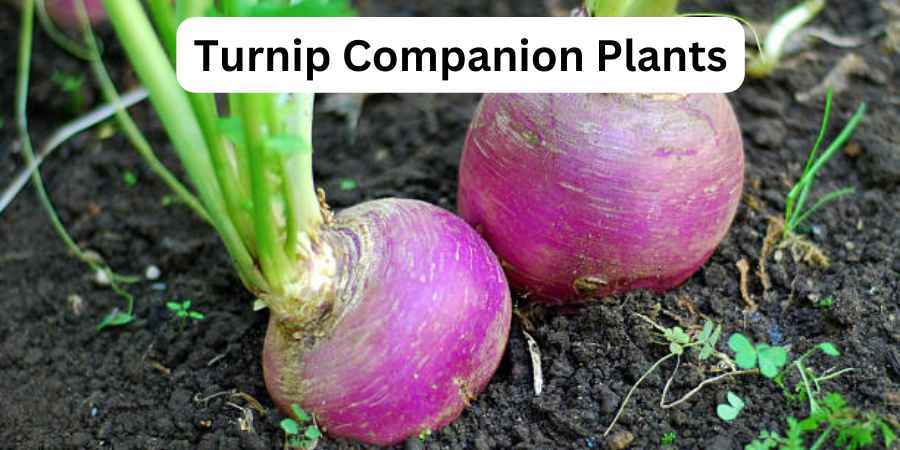Last Updated on May 31, 2025 by Jocelyn
Turnips are cool season, nutrient-rich root vegetables with a sweet, peppery flavor and edible greens.
They’re easy to grow, and through companion planting, they can support a healthier garden ecosystem by boosting nearby plant growth and deterring pests naturally.
The best companion plants for turnips include garlic, peas, beans, nasturtiums, marigolds, mint, thyme, leafy greens, and brassicas. These plants improve soil, attract beneficial insects, and protect turnips from common pests.
Avoid growing turnips near potatoes, onions, mustard greens, root crops, or sunflowers, as they can hinder growth or compete for nutrients.
Table of Contents
ToggleWhat Are the Benefits of Turnip Companion Planting
Turnip companion planting is a smart gardening technique that helps turnips and other plants grow better together. By growing different plants close to each other, like in alternating rows or intercropping, we can create a mini-ecosystem that brings many benefits.
| Benefit | Details |
| Natural Pest Control | Certain herbs like thyme and chamomile can repel bugs and attract beneficial insects like bees to deter pests without using chemical pesticides. |
| Improved Soil Health | Legumes like peas add nitrogen to the soil, making it more nutrient-dense for turnips. |
| Enhanced Flavor | Brassicas like broccoli and cabbage release compounds that make turnips taste better. |
| Support for Insects | A diverse ecosystem with flowering plants like marigolds helps attract pollinators and predatory insects to keep pests away. |
| Protection and Shade | Taller plants can provide shade and support to turnips, protecting them from harsh sun and strong winds. |
To learn more about companion planting check out my guides:
Best Turnip Companion Plants
In my garden, I’ve found that turnips are amazing team players when you pair them with the right companions. This pairing leads to a bountiful and healthy harvest. Certain plants have positive effects on growth.
For example, some companions can repel pests that might otherwise cause damage to your turnips. These plants also give increased nutrition to the soil, which helps in planting next to your turnips. By choosing the right companions, your turnips can thrive and grow better.
1. Garlic
I love garlic because it is a great friend to turn into in the garden. When garlic is planted near turnip, its strong aroma acts as a natural pest repellent. This means it helps keep away common pests like aphids, onion flies, and beetles.
The pungent smell of garlic creates a protective barrier around the turnip. It also keeps harmful root maggots from bothering the roots of the turnip. Planting garlic and turnips together makes a powerful team. Garlic grows best in well-drained, fertile soil with a pH range of 6.0 to 7.5. It needs enough sunlight and moisture to help its growth and bulb development.
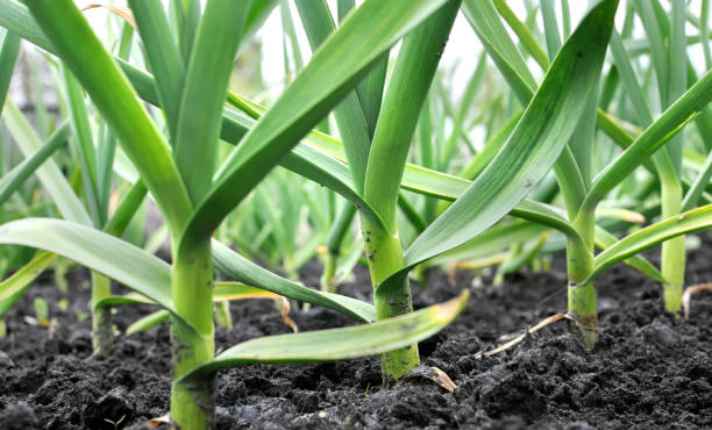
Besides protecting turnips, garlic also acts as a fungicide against soil-borne diseases, making the garden healthier for all neighboring plants. Garlic’s adaptability and strength in various conditions make it an ideal companion for turnip
2. Peas + Beans
In your garden, peas and beans are great buddies for turnips. These plants are nitrogen-fixing champions. They act as a natural fertilizer, boosting the growth of turnips. Pole beans are especially helpful because they grow upwards, saving space on the surface.

Both peas and beans have the ability to convert atmospheric nitrogen into a form that plants can absorb. This process enriches the soil, providing essential nutrients for the healthy growth of your turnips. When sowing turnip seeds, having these nitrogen fixers nearby will benefit your garden greatly.
3. Nasturtiums
Nasturtiums are fantastic plants to grow alongside turnips. They thrive in various soil conditions, especially in well-drained, moderately fertile soil with a pH range between 6.0 and 7.0. To help them flourish, ensure they get full sunlight and consistent moisture.
These vibrant flowers not only add a touch of vibrant color to your garden landscapes but also offer invaluable benefits to neighboring plants.
They are great at attracting pollinators and repelling pests. Nasturtiums are a good companion plant for many vegetables, but they really excel with turnips. They act as a great deterrent for aphids, cabbage worms, and other pests that like to munch on turnips.
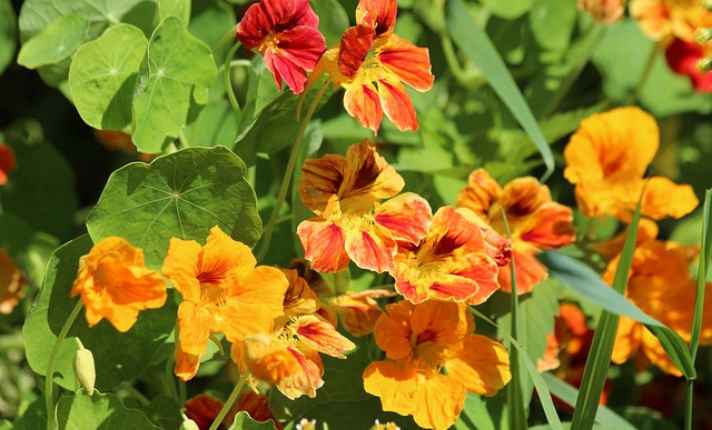
Additionally, they attract ladybugs and hoverflies, which prey on many garden pests. The trailing foliage of nasturtiums makes them a pretty and useful addition to any garden.
4. Brassicas
When planting turnips, it’s good to think about companion plants. Some great choices are broccoli, kale, cauliflower, and Brussels sprouts. These cole crops help each other grow better. Turnips and other veggies from the cabbage family can share the garden nicely. They protect each other from pests like aphids and slugs.
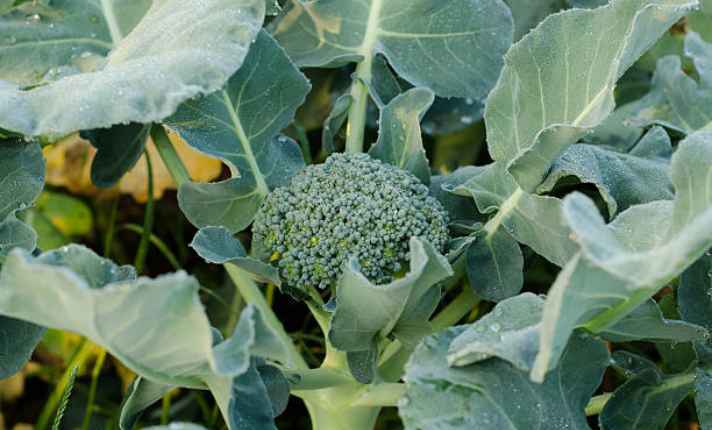
These little munchers love to eat turnips and other veggies, but planting different cole crops together can keep them away. So, if you grow turnips with broccoli, kale, cauliflower, and Brussels sprouts, your garden will be healthier and happier.
5. Cabbage Family
Growing turnips can be really fun, especially when you know how to keep pests away. One great way is by planting them with members of the cabbage family like Brussels sprouts, kale, and broccoli. These plants are often bothered by the same common pests.
But when you plant rows of turnips and cabbage family plants together, you can confuse the pests and reduce the overall damage to each crop. This intercropping strategy is a smart way to manage pests and make the best use of your garden space.
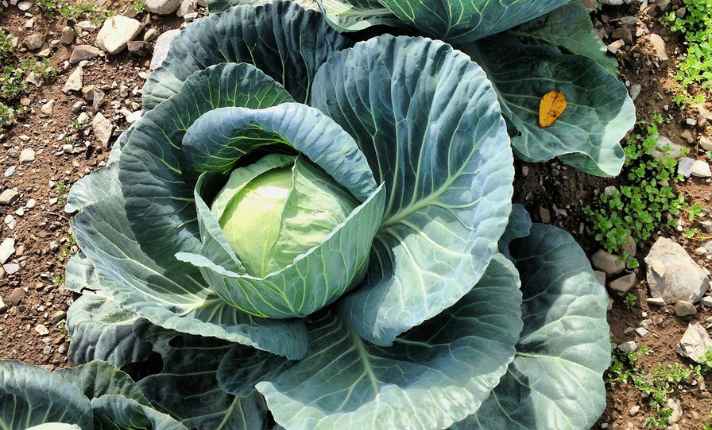
I’ve tried this method in my garden, and it really helps in optimizing the growth of both turnips and the cabbage family. By alternating the rows, it becomes easier to protect the plants and keep them healthy.
6. Mint
Mint is a great companion for turnips because its strong fragrance can repel pests like flea beetles and aphids that are common in turnip gardens. Plant mint in pots to prevent it from spreading uncontrollably. This flavorful herb also attracts earthworms, which are excellent for soil health, and predatory wasps that control pest populations.
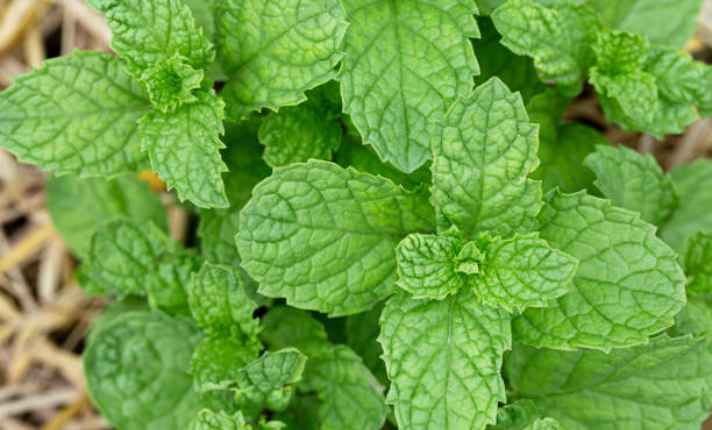
Since mint can be invasive, the best option is to grow it in containers near your turnip patch and use chopped mint as mulch. I’ve found this method works well in my garden, keeping the pests away while improving the soil.
7. Thyme
In my vegetable garden, I’ve found that thyme is an amazing companion planting partner for turnips. Not only does it help repel the cabbage whitefly, a common garden pest, but it also attracts beneficial insects like ladybugs and hoverflies. These helpful bugs keep other pests away and protect the plants.
Thyme is one of those fragrant herbs that can also deter hungry foragers such as rabbits and deer, making it a great protector for your garden. For thyme to grow well, it needs sandy soil or loamy soil with a pH range between 6.0 and 8.0, along with full sunlight and moderate moisture.
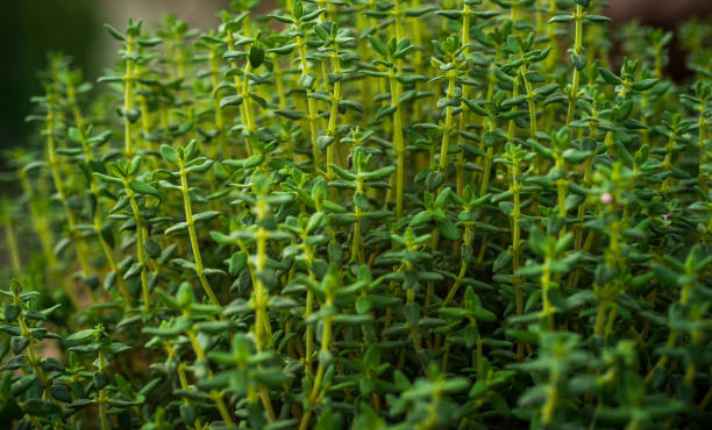
This combination helps it develop flavorful foliage and maintain its compact growth. Additionally, thyme supports neighboring plants by enhancing garden biodiversity, creating a healthier and more vibrant garden environment.
8. Marigolds
Marigolds are wonderful plants to have in your garden. Not only do their bright flowers make the area look beautiful, but they also repel pests. When you plant marigolds around the perimeter of your turnips, they help keep soil pests and nematodes away, which can harm your vegetables.
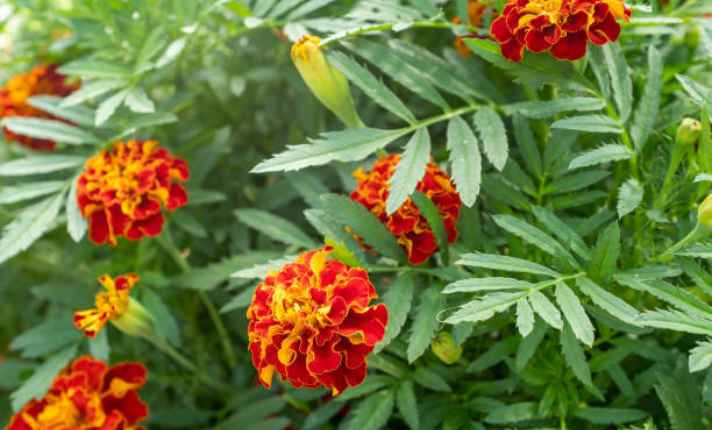
The flowers attract beneficial insects that can help your garden while deterring harmful ones. This makes marigolds a great choice to protect your turnips and keep your garden healthy.
9. Leafy Greens
When planting turnips in your garden, it’s smart to include leafy greens like Swiss chard, spinach, and lettuce. These plants don’t compete much for nutrients, which helps them grow well together. They also need similar amounts of water and light, making them great companions.
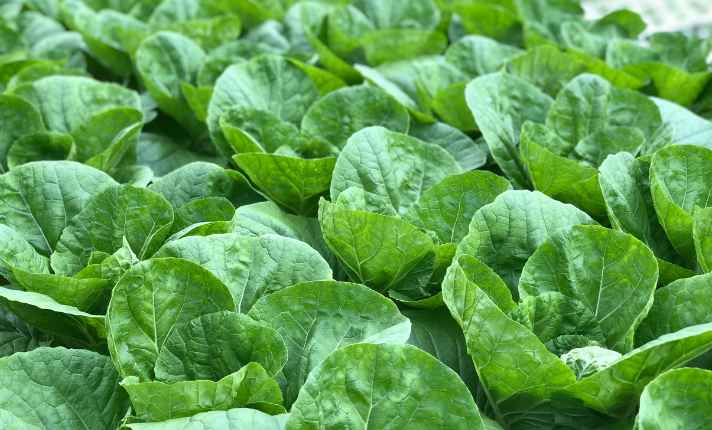
I love planting leafy greens between my turnip rows because it uses up all the garden space efficiently and creates a more diverse and healthy growing environment.
Worst Turnip Companion Plants
When planting turnips, avoid potatoes. They can cause turnips to get diseases. Cabbage is another bad choice. It takes away important nutrients. Mustard greens are also bad. They compete for space and water. In my garden, I once planted turnips near cabbage. The turnips didn’t grow well. From experience, I know it’s best to keep these plants away from turnips.
1. Potatoes
When planting turnips, consider what other crops you grow nearby. Potatoes and turnips both store starch in their underground organs like tubers and roots, and they might compete for space. Potatoes need loose soil, a pH range of 5.0 to 7.0, full sunlight, and consistent moisture for good growth.
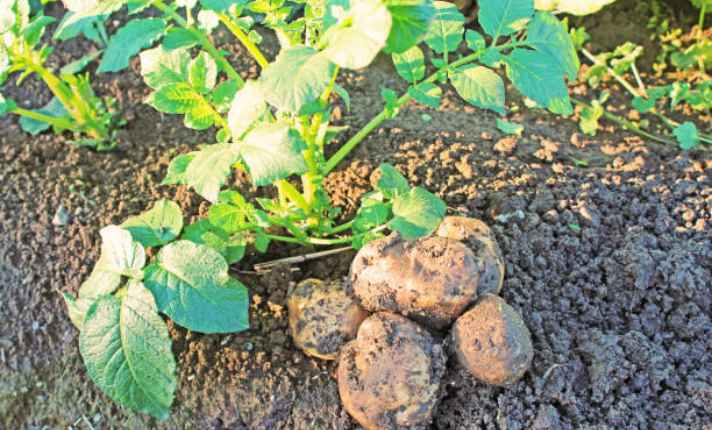
They also help neighboring plants by improving soil structure, suppressing weeds, and adding nutrients when they decompose. However, both can attract pests like root maggots and flea beetles, causing more damage. Keeping them at a distance or planting them in alternate years helps reduce pest buildup.
2. Onions
Onions are great companion plants for turnips. They keep pests away and don’t compete for growing space. Both grow underground and use different storage organs for their starches. Plant onions and turnips one or two feet apart for best results. Onions protect turnips and save space. Other good companion plants for turnips are rhubarb and arugula.

3. Root Crops
Turnips grow well with many plants, but be careful with other root crops like carrots and parsnips. These plants can compete for nutrients and space in the soil. Because they have similar growth requirements and attract the same pests, they can cause problems like nutrient depletion and pest infestation.

If you want to grow multiple root crops in your garden, it’s best to allocate separate areas for them to avoid competition.
4. Mustard Greens
When you plant mustard greens near your turnips in the garden, you need to be careful. Mustard greens can attract pests that also like turnips, which means there is a higher risk of infestation and disease.
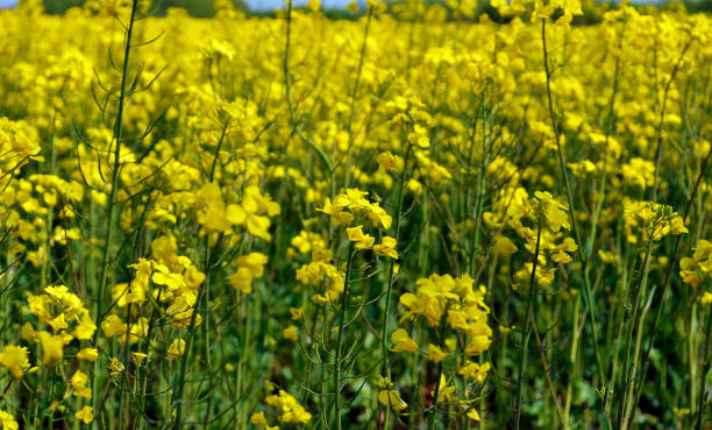
To keep your turnips safe, it’s best to grow mustard greens in a different part of the garden or in another season. This way, your turnips will be healthier and free from problems. My family and I always make sure to separate our mustard greens and turnips, and it has helped our garden grow better.
5. Sunflowers
When growing turnips, it’s important to consider their companions. Sunflowers can have a unique impact on turnips. They create an allelopathic effect similar to fennel, which means they release chemicals that can affect other plants around them.
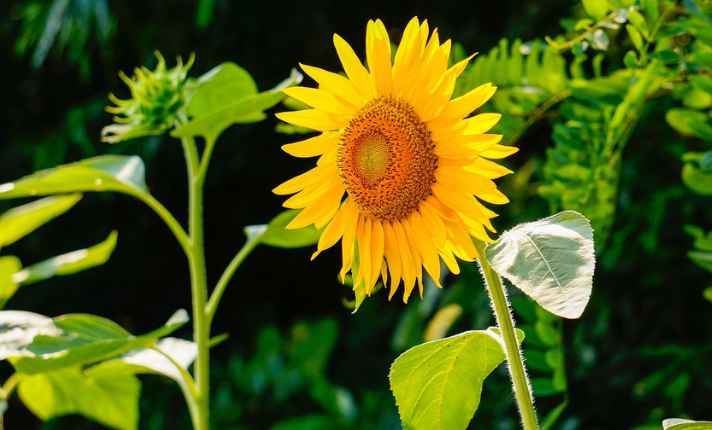
Sunflowers have large root systems that dominate the soil, leaving less room and nutrients for turnips. This can make it hard for turnips to get what they need to grow well. Also, the shadow of sunflowers can inhibit the growth of turnips by blocking sunlight. It’s best to keep sunflowers planted in a different area to avoid these problems and help your turnips grow strong and healthy.
For more information on companion planting, take a look at my guides:
Companion Planting Tips for Different Regions
Companion planting helps turnips grow better in different regional conditions. Knowing your climate, soil type, and local pest populations is important. Here are some tips for different areas:
| Region | Climate/Soil Type | Tips |
| Warm, Humid Climates | Hot and humid, like Florida | Use beans and southern peas to fix soil nitrogen. Plant marigolds and nasturtiums to deter pests. |
| Cool, Northern Climates | Cool with shorter growing seasons | Choose fast-maturing companions like lettuce and spinach. Garlic can be a good cold-hardy companion. |
| Dry, Arid Regions | Dry with water scarcity and intense sunlight | Use drought-tolerant plants and ground cover to retain soil moisture. Mulch to conserve water and protect roots. |
| Heavy Clay Soil | Poor drainage and compaction | Plant radishes and leafy greens to break up soil and improve structure. Add organic matter for better aeration. |
| Urban Gardens | Limited space and higher pollution levels | Try vertical companion planting with climbing plants. Container gardening with small companions in pots can save space. |
FAQ’s
Q: Where Is the Best Place to Plant Turnips?
A: Turnips need a sunny spot with cool conditions and fertile, moisture-retentive soil. They can be grown in large containers if you don’t have a garden. Harvest them as mini-veg for meals, ensuring they have the right environment to grow well.
Q: What Is the Best Month to Plant Turnips?
A: To get the best turnip crop, plant them around April 15 for a spring harvest and August 1 for a fall harvest. Rutabagas need a longer growing season and should be planted in late May or early June for fall. Space the seeds one to two inches apart in rows 18 to 30 inches apart.
Q: What Is the Life Cycle of a Turnip?
A: Turnips are a biennial plant that takes two years to complete its life cycle. In the first year, the root grows and stores nutrients. In the second year, the turnip flowers, produces seeds, and then dies. The flowers are tall and yellow, with seeds forming in pea-like pods.
Q: Do Turnips Like Nitrogen?
A: Turnips prefer soils rich in potassium and phosphorus, but not nitrogen. Adding bone meal and wood ashes to the soil before planting turnips helps increase these nutrient levels. This makes the turnips grow better and healthier.
Q: How to Fertilize Turnips?
A: When seeding turnips, use 75 to 80 pounds of nitrogen per acre and add phosphorus and potassium for a small grain to give turnips a competitive edge over weeds.
Conclusion
Planting turnips doesn’t have to be complicated or overwhelming. By choosing companion plants, you can enhance the health and yield of your turnip crop. This helps in creating a beautiful and diverse garden space.
Marigolds, nasturtiums, and borage are unique plants that can help turnips thrive. Companion planting can also maximize your gardening space and increase plant production. For example, planting beneficial plants like peas and mint near turnips can keep pests away and attract beneficial insects to your garden.
However, it’s best to avoid planting potatoes and onions near turnips, as they can stunt their growth. With good planning, you can have a bountiful harvest. It’s fun to experiment during the growing season and see the difference companions make. You’ll be surprised at how much these little companions can help your turnips grow.
